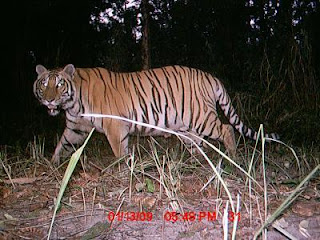Soil texture and soil colour
 Soil texture refers to the relative proportion of sand, silt and clay size particles in a sample of soil. Clay size particles are the smallest being less than 0.002 mm and 0.5 mm in size. The largest particle is sand with diameters between 0.05 to 2.00mm for very coarse sand. Soil that are dominates by larger particles are referred to as coarse textured soils. Soil scientists’ group in to:
Soil texture refers to the relative proportion of sand, silt and clay size particles in a sample of soil. Clay size particles are the smallest being less than 0.002 mm and 0.5 mm in size. The largest particle is sand with diameters between 0.05 to 2.00mm for very coarse sand. Soil that are dominates by larger particles are referred to as coarse textured soils. Soil scientists’ group in to:
Soil texture classes:
The sides of the soil texture triangle are scaled for the percentages on the left side of the triangle are read from left to right across the triangle. Silt runs from to the bottom along the right side and is read from the upper right to lower left. The percentage of sand increases from right to the left along the base of the triangle. Sand is read from the lower right towards the upper left portion of the triangle. The boundaries of the soil texture classes are highlighted in blue. The intersection of the three sizes on the triangle gives the texture class. For instance, if you have soil with 20% clay, 60% silt, and 20% sand it falls in the “SILT LOAM” class.
Soil texture effects many other properties like structure, chemistry, and most notably, soil porosity, and permeability. Soil porosity refers to the amount of pore, or the open spaces between soil particles. Pores are created by the contacts made between irregular shaped soil particles. Fine textured soil has more pore space than coarse textured because you can pack more small particles into a unit volume than larger ones. More particles in a unit volume create more contacts between the irregular shaped surfaces and hence more pore space. As a result, fine texture clay soils hold more water then coarse textured sandy soils. Permeability is the degree of connectivity between soil pores. A highly permeable soil is one in which water runs through it quite readily. Coarse textured soils tend to have large, well-connected pore spaces and hence high permeability.
2. Sandy loam: Varies from very fine loam to very coarse. Feels quite sandy or, gritty, but contains some silt and a small amount of clay. The amount of silt and clay is sufficient to hold the soil together when moist. Makes a weak ribbon(less than 2.5cm long).
3. Silt loam: Silt is the dominant particle in silt loam, which feels quite smooth or floury when rubbed between the thumb and fingers. Makes a weak ribbon (less than 2.5cm long).
4. Silty clay loam: Noticeable amounts of both silt and clay are present. Makes a medium ribbon (2.5 to 5cm long).
5. Clay loam: Clay dominates a clay loam, which is smooth when dry and silky when wet. Silt and sand are usually present in noticeable amounts in this texture of soil, but are overshadowed by clay. Makes a medium ribbon (2.5 to 5cm long).
Subsoil colours, in general, are indications of air, water, and soil relationships and the degree of oxidation of certain minerals in the soil. Red and brown subsoil colours indicate relatively free movement of air and water allowed by the soil. If these or other bright colours persist throughout the subsoil, aeration is favourable. Some subsoil that are mottled (have mixed colours), especially in shades of red and brown, are also well-aerated.
Yellow-coloured sub soils usually indicate some drainage impediment. Most mottled sub soils, especially those where gray predominates, have too much water and too little air (oxygen) much of the time. The red-to-brown colour of subsoil comes from iron coatings under well-aerated conditions. In wet soils with low oxygen levels, the iron coatings are chemically and biologically removed, and the gray colour of background soil minerals shows.



















